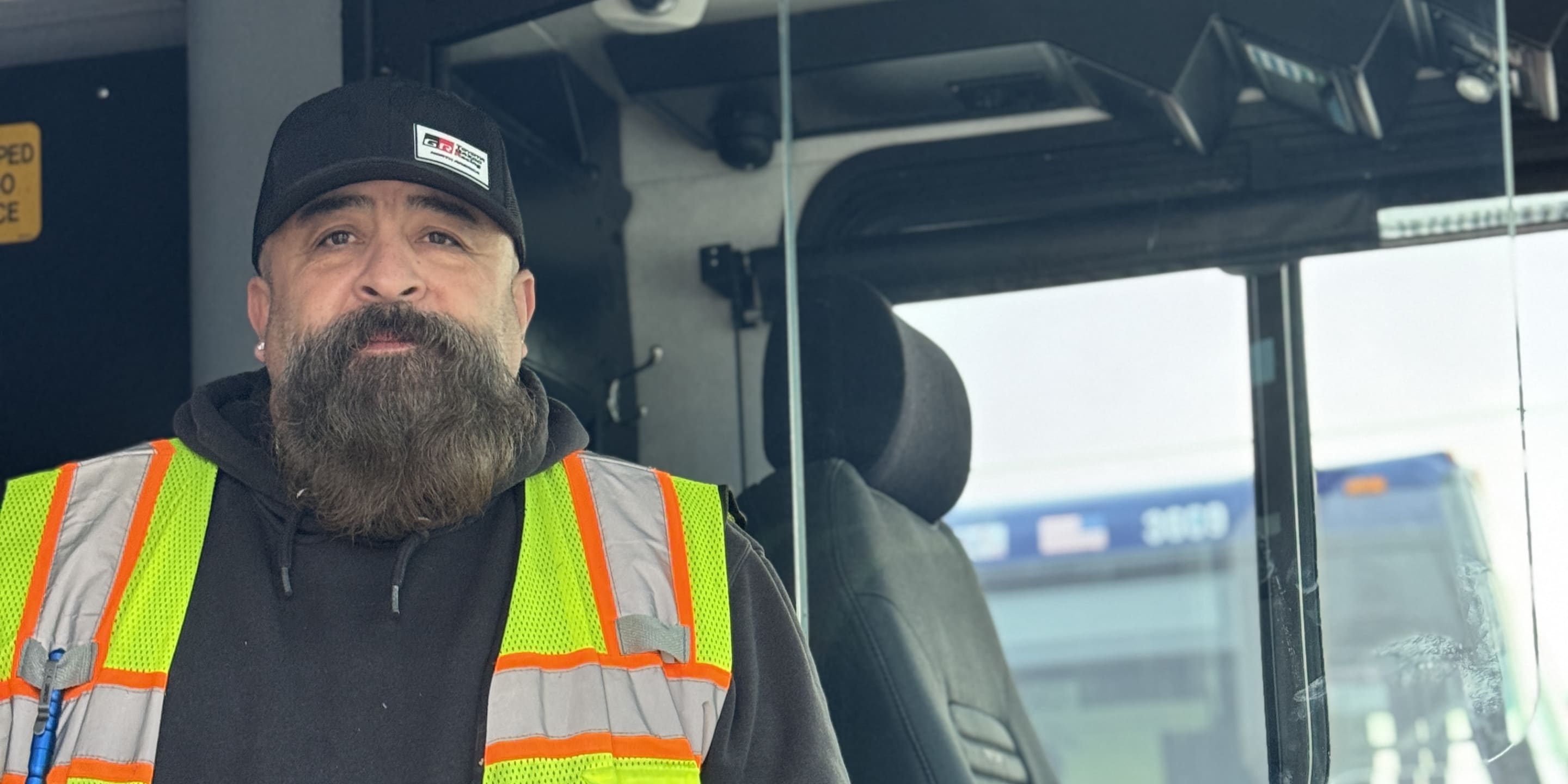
New operator safety shields aim to keep bus operators out of harm’s way
2020 changed the world forever. A once-in-a-lifetime global pandemic combined with societal issues hitting flashpoints and a pivotal United States election year led to the creation of a volatile environment for many, including the hundreds of RTD operators still on the road. Quick thinking and rapid adjustments were made to protect operators from COVID-19. However, with operator assaults on the rise, quick action was needed to make it safer for operators to do their jobs. This understanding has evolved into one of the agency’s largest advancements ever toward operator safety.
Work on a permanent safety barrier solution began shortly after the height of the pandemic.
“We had to evolve from a COVID way of thinking into a way of thinking that could better protect drivers,” said Daniel Ortega, a body shop supervisor at District Shops.
The agency made the project a top priority, with RTD’s Leadership Team expressing support from the start and made sure the funding and resources were in place to begin ordering the shields as soon as possible.
“RTD is one of the best agencies out there in terms of making safety improvements for our operators,” Ortega said.
The agency moved forward with selecting AROW Global as the supplier and chose their AROWGuard Slide System as the product to be installed on RTD’s bus fleet due to its simple, intuitive design. This new system, custom-built for the fleet’s different buses, features a laminated safety glass system reinforced by a steel door.
The upgraded safety shields are a major improvement over the in-house design engineered during the onset of the COVID-19 pandemic to protect operators from the virus.
Back then, Ortega said, the question was, “What could we do to protect the drivers that aligned with the Center for Disease Control’s guidelines?”
The solution: Plexiglass barriers that separated the operator’s seat from the rest of the bus. The barriers were a quick, inexpensive and effective temporary solution to an evolving pandemic, and they were all fabricated in the agency’s body shop. The entire bus fleet was equipped within a couple of months.
Unlike the plexiglass barriers, the new safety shields are engineered to withstand blunt force objects. Also, the system allows the operator to extend the safety glass for more protection.
Another bonus of AROWGuard is the company’s partnership with Gillig, the manufacturer of the majority of RTD’s bus fleet. This made retrofitting older buses a much easier process.
Installation of the new safety shields began in late 2023 with a focus on 6000-series buses that operate on routes with higher numbers of operator assaults. A team of two technicians work for about four hours to install a single safety shield. At this pace, they complete approximately two buses per day.
Eric Castillo, Assistant General Superintendent of Bus Maintenance, said the new safety shields have been installed on 128 buses as of Feb. 8, with a goal to complete 250 buses by the end of June. He also noted that 102 new in-service buses came with the shields pre-installed.
“Operating a bus has to be one of the most challenging jobs out there,” Ortega said. “I have the upmost respect for our drivers, and if we can do our little part to increase their safety, it’s a win-win for not just our drivers, but for everyone.”

